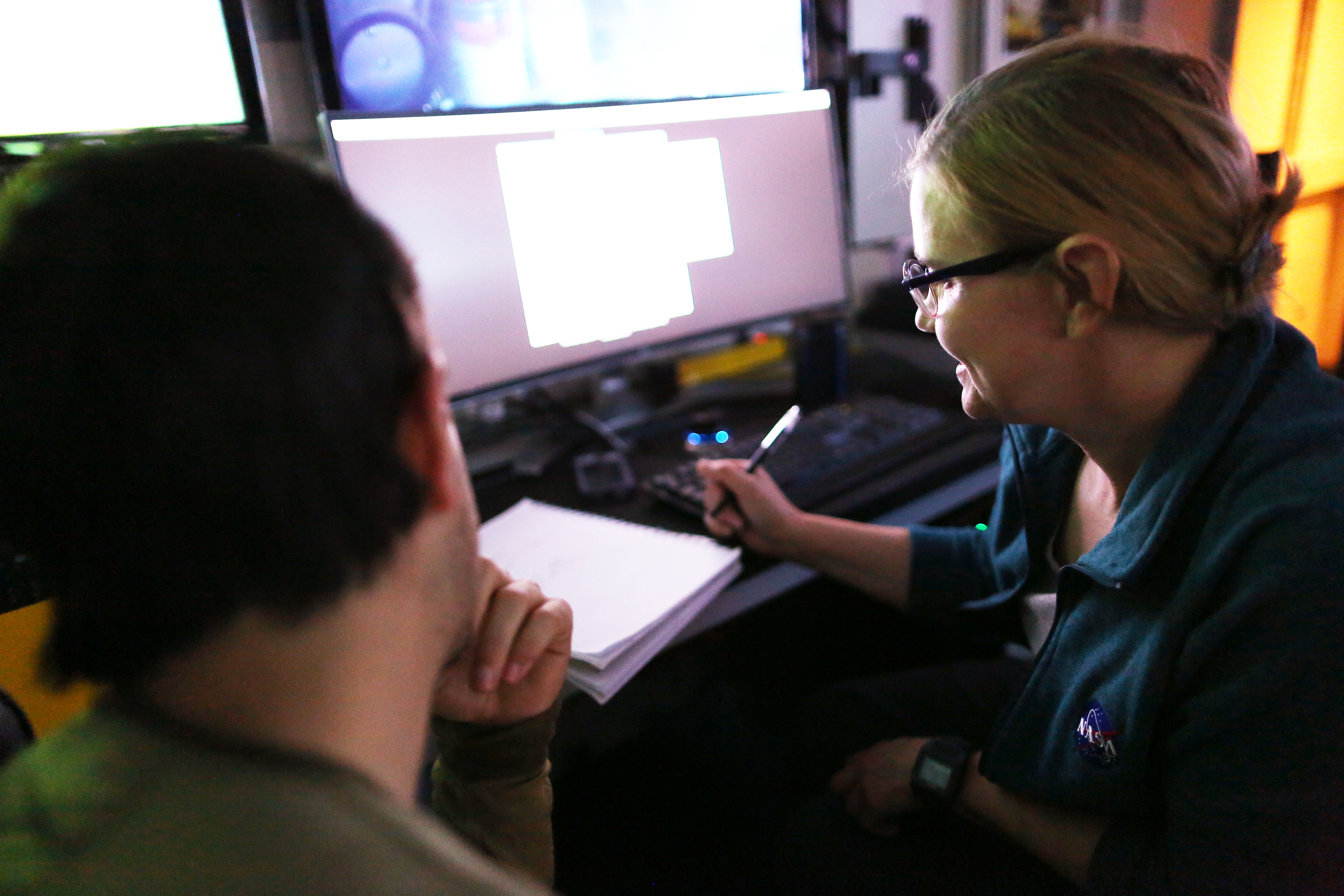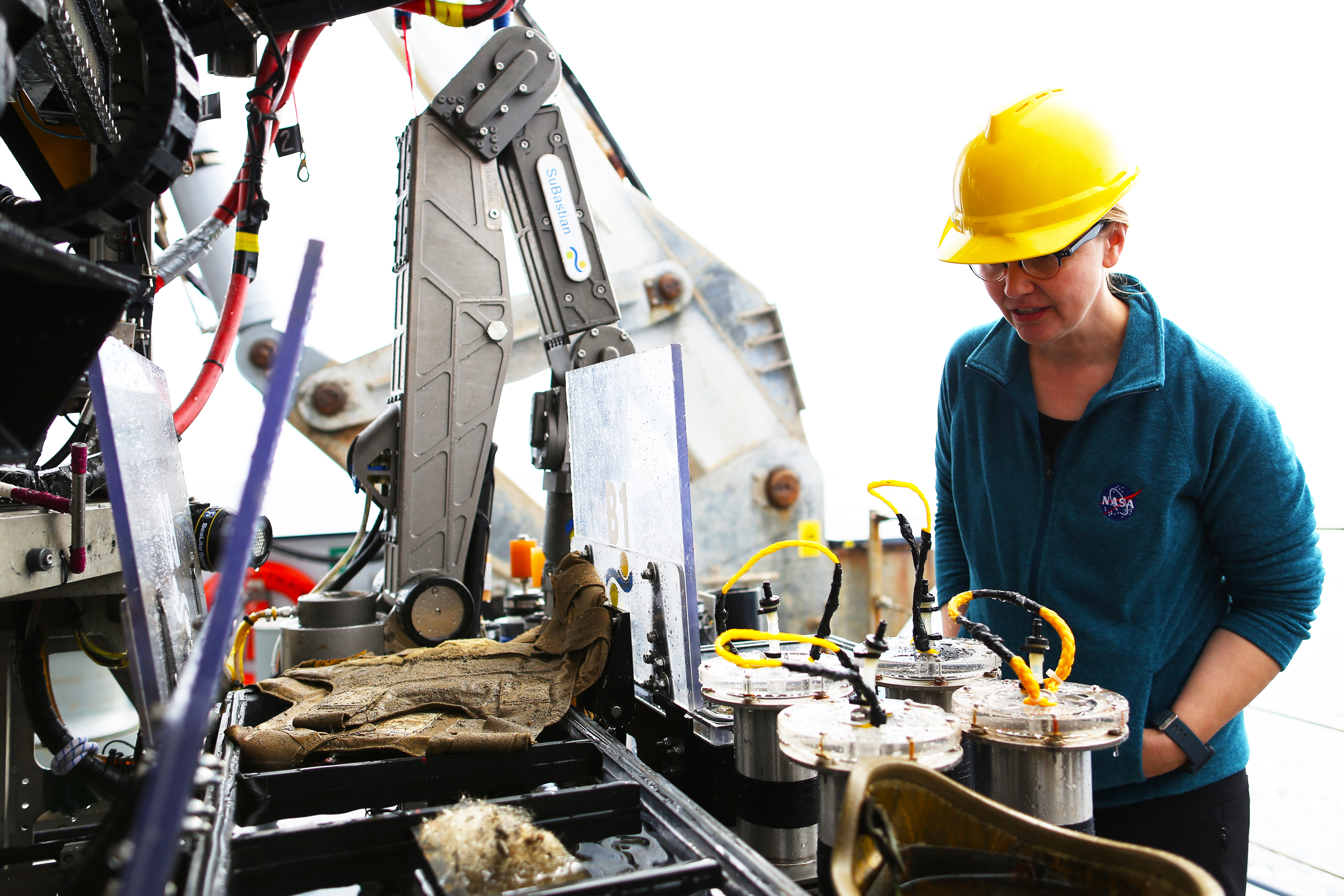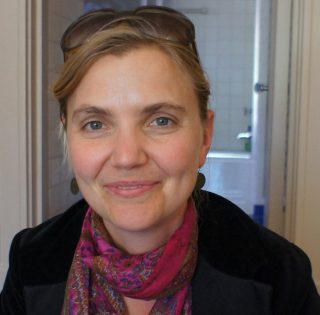Since 1978, NASA has built, launched, and operated remote sensing satellites that orbit the Earth to better understand our home planet—which is over 70 percent ocean. In the past 40 years, we have learned so much by looking at the ocean from orbit in space.
While we still have much to discover in our oceans here on Earth, we are curious about other oceans in our solar system. These worlds have more than a dab of water here or there—some are wholly composed of water and some have oceans that feed majestic features. On Europa, one of Jupiter’s moons, geyser-like features that we call “plumes” shoot up more than a hundred miles in the air. Some of these worlds have liquids other than water (yes, really!). We call these worlds (and our own Earth) Ocean Worlds. NASA is starting an amazing journey to jump in and explore them.

Questions and Answers
How do we know there is so much water the far reaches of our solar system? How do we know about those plumes on Europa? We have seen them with the Hubble Space Telescope—a telescope so powerful it was able to image these plumes several times from Earth’s orbit. The first time they were seen, the science community was so stunned that NASA consistently watched for them for a few years just to make sure they were really there—and they were, shooting up into the air for 100 miles or more!
So, why am I here? Why have a NASA engineer aboard the R/V Falkor? I am here because NASA has decided that now is the time to start looking at ways to build new spacecraft to plunge into these Ocean Worlds. During this expedition, the Girguis Lab at Harvard has been testing an autonomous lander, known as the ABISS, funded by NASA’s Planetary Science Technology Analogue Research (PSTAR) Program.
Why the deep sea in the Pacific? The dynamic environment of the ocean floor here is a model system for Ocean Worlds like Europa. Europa has a thick icy crust and beneath that crust, far from the reaches of oxygen and sunlight, we believe there may be life teeming at the bottom, much like what we have been seeing during deep dives with our Remote Operating Vehicle (ROV SuBastian).
By working in the deep ocean waters on Earth, we push the limits of our understanding in existing hardware designs and engineering choices for missions in outer space.
Exploring, Expanding
I am here because someday, we would like to build missions that venture into the depths of an ocean in a far-away Ocean World, like Europa. The path to developing that technology starts here—with sophisticated tools like the ABISS, ROV SuBastian, and their scientific instruments. When we do make that amazing plunge, we will be far from home—farther away than the Moon or Mars. We will have to think about new ways to operate and communicate. In preparation for this ambitious goal, we have the opportunity to expand on what NASA knows well: how to build spacecraft and science instruments that can withstand the intense shake, rattle and roll of launch, and the total emptiness of the vacuum of space (not to mention its radiation).
The next step requires us to extend into a domain that the ocean exploration community knows well: how to survive a splash into a mysterious liquid, and then go deep.
Jumping into any liquid presents an amazing challenge and an awesome opportunity to invent, to create, and to build. We will need to design differently, test differently, and operate differently in order to explore these incredible waters (and other amazing liquids) in our solar system. This is why I am here—to learn more about the operations and deep ocean test principles from the amazing crew at the Schmidt Ocean Institute. I have joined this specific expedition with the Girguis Lab and the ABISS to start to think hard about engineering testing and scientific instrument design in the deep oceans and to witness sample collection and handling choices with the teams from UC-San Diego and the Scripps Institute of Oceanography.

We are all together on the R/V Falkor, exploring the California Borderlands, with the goal of combining our individual superpowers to tackle challenges in the exciting future ahead of us. When it comes to oceans (both here on Earth and on other planets) there are endless possibilities in the realms of engineering and scientific knowledge, and we hope you will enjoy the journey with us as we explore!

